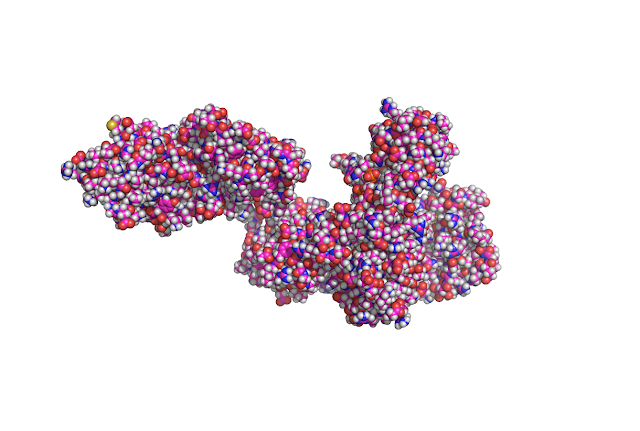 |
| DNA polymerase hard at work in the cell! Photo from accentsrq.com |
 |
| View down the double helix |
The accuracy of DNA polymerase enzyme is remarkable, research has shown it inserts an incorrect base pair every 104-105 bases in eukaryotes. Not impressed? DNA polymerase is also its own editor! It has proofreading capabilities and inhibits the addition of a nucleotide following a mismatch, increasing the accuracy of DNA polymerase 102-103 fold. Spell check cannot compare. If one factors in the enzyme’s proofreading capabilities, the enzyme makes an error every 106 to 108 base pairs!
Still not convinced DNA polymerase is the shizz? Think you could live without it? Think again. If a nucleotide mismatch goes unrepaired, known as a mutation, it can go unnoticed in the organism, dubbed a silent mutation, or it can be deleterious to the organism. This single nucleotide change alters only one amino acid in the protein chain, but the results are devastating. One of the most well known example of a point mutation is sickle-cell anemia, and without daily treatment the average life expectancy of the patient is 20-40 years. |
| Textbook version of DNA polymerase activity Photo from worldofscience.blogcu.com |
 |
| Double helix in stick display in rainbow coloring |
 |
| Pretty. |
References:
Genital Herpes. CDC, Dec. 2007. Web. 25 Apr. 2011.
<http://www.cdc.gov/std/herpes/herpes-fact-sheet-lowres-2010.pdf>.
Goodshell, David S. RCSB Protein Data Bank. N.p., Mar. 2000. Web. 17 Mar. 2000.<http://www.rcsb.org/pdb/static.do?p=education_discussion/molecule_of_the_month/pdb3_2.html>.
Nelson, David L., and Michael M. Cox. Principles of Biochemistry. 5th ed. New York:W.H. Freeman and Company, 2008. 979-982. Print.
Nelson, David L., and Michael M. Cox. Principles of Biochemistry. 5th ed. New York:W.H. Freeman and Company, 2008. 289-290. Print.
Sickle cell anemia. Ed. Linda Vorvick, Yi-Bin Chen, and David Zieve. A.D.A.M., 31 Jan. 2010.Web. 25 Apr. 2011. <http://www.ncbi.nlm.nih.gov/pubmedhealth/PMH0001554/>.
Skin Cancer. CDC, 23 March 2010. Web. 25 Apr. 2011.<http://www.cdc.gov/cancer/skin/basic_info/>.






